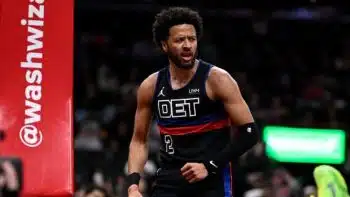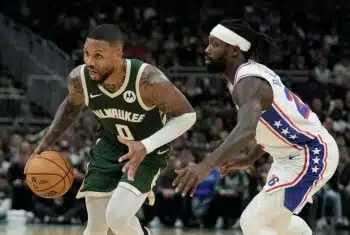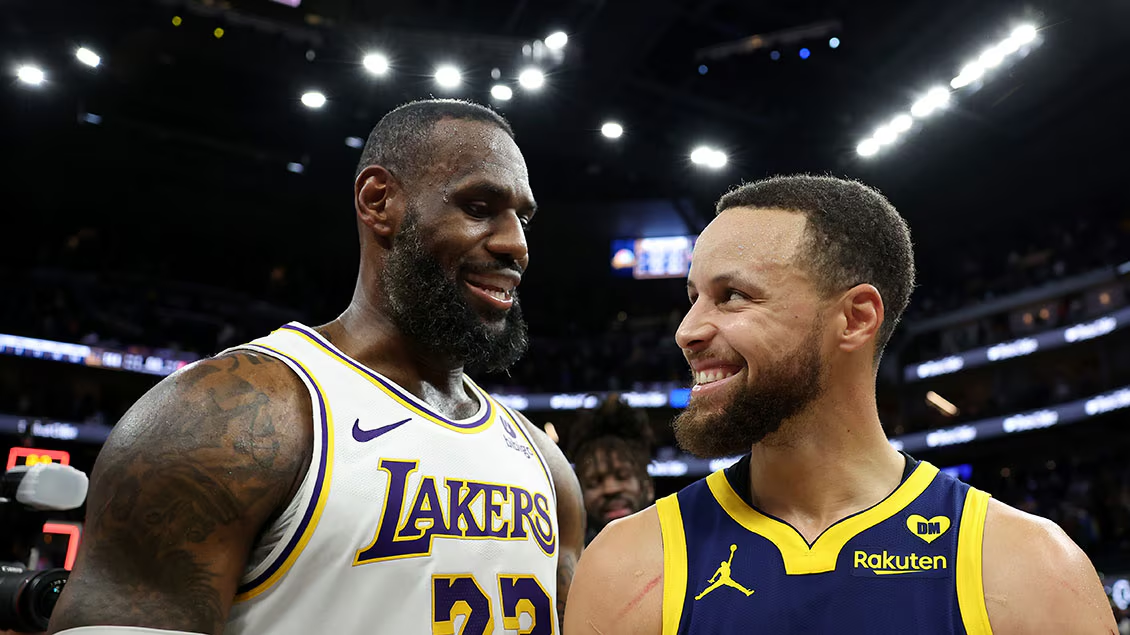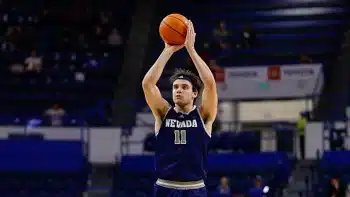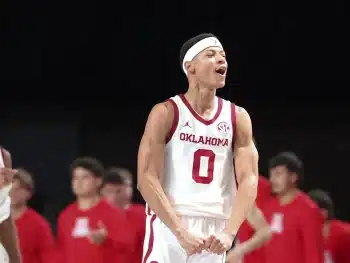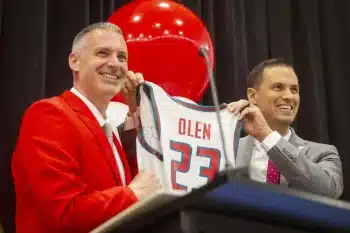NBA
Little Giants: Utah’s Big/Small Conundrum
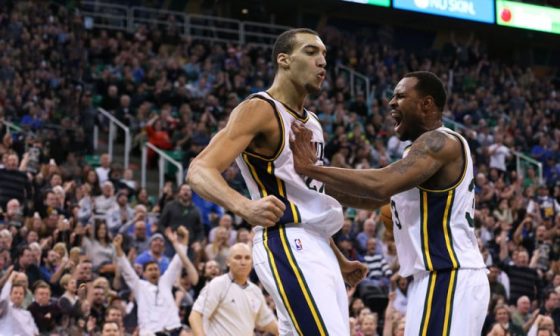
In a league that seems to get smaller and more spaced out by the week in recent seasons, the Utah Jazz appear to be heading in the opposite direction. Their primary identity only got bigger last season when Rudy Gobert left the bench, bringing the starting frontcourt (Gobert, Derrick Favors and Gordon Hayward) to an average height of over 6’10. One piece is down for the season in Dante Exum, but with Alec Burks and Rodney Hood battling for the bulk of the shooting guard minutes, the Jazz are set to head into their core’s prime featuring a starting unit without a single guy under 6’6.
This alone doesn’t prohibit Utah from changing with the times, but their relative lack of spacing across the lineup has presented roadblocks and will continue to do so. Exum was a non-threat as a shooter in his rookie season, and his in-house replacements this year either have a track record as sub-par shooters at the professional level (Trey Burke, Raul Neto) or so many other question marks that it’s unclear if they’ll see the floor consistently (Bryce Cotton). Gobert is doubtful to ever be a threat outside of the paint, and Favors only became a reliable mid-range shooter last season. Things could tighten up quickly in Salt Lake City.
Look a little closer, though, and the makings of a more versatile team are visible. For one, somewhat unlike a few of his peers around the NBA who seem reluctant to embrace the league’s spacing revolution, head coach Quin Snyder knows the value of adaptability.
“We’re going to play different ways, as appropriate,” Snyder told Basketball Insiders. “We have to be able to do both. We have to stick with who we are and put our best players on the floor, and I think we also need to be prepared to play with a smaller lineup in the course of the game and in specific games as well.”
The Jazz have the personnel to make Snyder’s words reality, though doing so will require new bits of emphasis from certain guys. They went full-on “small-ball” (with just one of Gobert, Favors or Trevor Booker on the floor) for limited stretches last season; Snyder will need to see more to gauge their long-term viability, but there were encouraging nuggets to be found in these small samples. Gobert or Favors as a pick-and-roll dive man had bits of success with shooters spotting up around them, and Booker’s own shooting prowess makes five-out units an intriguing possibility. Hayward is in the best shape of his career, more muscular and well-conditioned than might have even seemed possible coming out of Butler six years ago. He even recently told Basketball Insiders he’d “be comfortable with [playing power forward].”
Perhaps more intriguing, and certainly more in line with Snyder’s general philosophy, is the possibility of units able to space the floor without sacrificing any actual size down low. Utah’s bigs beyond Favors and Gobert have real upside here, even if utilizing them primarily as floor-stretchers will be a departure from much of their careers to this point.
Booker is the most obvious candidate, a guy who, at 6’7, fits the “small” designation in height alone. He’s nearly as effective a rebounder as Favors and a rock down low, meaning he comes without some of the traditional concerns for true wings shifting up a spot. Booker actually shot a better percentage from deep last season than Draymond Green, essentially the league’s prototype for this sort of style, and has a number of other elements to his game that could afford him a similar reputation offensively if he emphasizes the right things.
There’s less of a track record for European transplant Tibor Pleiss, and none for 12th overall pick Trey Lyles. The Jazz are high on both as shooters, though – Pleiss hit 66 of 90 attempts from deep in a summer workout, according to general manager Dennis Lindsey, and already has folks present for early Jazz training camp action surprised at the touch he has stored in that 7’3 frame. Lyles has shooter’s form despite lukewarm college numbers on a limited sample, and his array of other ball skills will make him a real value if his mechanics translate into results.
“There [are] going to be times this year where we have other lineups or other options that’ll be more efficient and successful in those situations. We’re aware of it, I think the league’s aware of it,” Snyder said. “There’s always trends, and you’re not trying to buck a trend, you’re just trying to take advantage of the personnel you have and play the right way for you.”
Snyder doesn’t want to compromise the team’s identity, and that begins with Favors and Gobert up front. Guys like Booker and Pleiss could provide some options with the right results, but giving in and turning straight to those avenues at the first sign of trouble opens the Jazz up to smart opposition goading them away from their preferred tandem for uncomfortable periods. Favors and Gobert played over 20 minutes a game together last season once the latter found his way into the starting lineup – a number that feels more like a baseline this season if both stay healthy.
Opponents became more aggressive about pushing their own smaller units on the Favors-Gobert combo near the end of last season; both will have to adjust to keep it from happening with success too often this year. There’s added pressure to stretch the floor out and balance the scales if the opposition is doing the same thing on the other end, and Favors knows much of that falls on him.
“I know Rudy’s going to be mostly in the low-post area and the paint more than I will, so this offseason I took it upon myself to continue to work on my jumper and extend my range,” Favors said. “Work on my high-post game so that when Rudy seals, I can hit him with a pass.”
That last bit is vital. Gobert began seeing wings guarding him for short periods down the stretch last year, and his general inability to punish them could be a big hurdle if it remains. He and the coaching staff are well aware of this, working hard over the offseason on Rudy recognizing and exploiting those mismatches more decisively with added strength and quick duck-ins to the low block. It’s an uphill battle given his size and lack of ball skills, though, and teams will continue to be more adventurous with him if he can’t improve his efficiency on looks like these:

Snyder knows he’ll have to get creative at times, and he is fortunate to have guys who trust him to make the right calls. Favors and Gobert came a long way as a symbiotic pairing as last year wore on – “I love to play with Derrick,” Rudy said on media day – and each has talked about how big an asset their passing is, both with each other and the other three players on the floor.
Things will become exponentially easier if Favors can flash certain stretch elements more consistently, but Snyder doesn’t want him reaching beyond his skill set. He’s already all but ruled out the possibility of Favors becoming a consistent three-point shooter (Favors himself has essentially done the same), preferring he stay within himself.
“Obviously he’s worked hard on his shooting,” Snyder said. “It’s interesting – sometimes guys that don’t have three-point range, they’re not as consistent [if you’re] constantly wanting them to back up. David West has done pretty well being a great mid-range shooter. There’s a bunch of guys out there. LaMarcus Aldridge is a great mid-range shooter. I’m not concerned about Fav being a three-point guy. I want [him] to be consistent and aggressive when he’s in his range.
“I like the idea of him being able to be a better playmaking four, where his ball skills are better, his passing, his ball-handling. And what that means is he’s probably going to be more aggressive offensively out on the floor.”
Shooting threes would take a guy like Favors farther away from the basket and potentially damage Utah’s powerful offensive rebounding, another tool at their disposal to combat teams downsizing on them. Snyder is cognizant of the back-and-forth, and of another strong element in both players’ game.
“A lot of it involves them screening, too,” Snyder said. “If you’re not going to space out to the three-point line, you can be effective offensively – you want to be a factor, you want people to have to guard you, [and] any type of cutting or screening accomplishes that. It’s harder to do – it takes more timing, it takes more work.”
The defensive side of the ball might be the even bigger test for Favors, who’s already proven he can punish smaller guys and do a good job toggling back and forth between the four and five spots. His track record guarding out to the perimeter is less robust; there’s no concrete indication he can’t do it for larger periods, but also little evidence that he can. The task of checking any opponent’s de facto power forward will fall on Favors’ shoulders when he and Gobert share the court, and Utah’s ability to remain elite defensively against the league’s best offenses could hang in the balance.
“Obviously it’ll be a challenge, because I’m a big and most of the guys playing the four position now [are] three-men,” Favors said. “It’ll be a challenge, and I’m looking forward to it.”
His sentiment didn’t specifically echo the team’s as a whole, but it may as well have. The Jazz face some stiff tests ahead, up against the largest set of expectations this group has ever experienced. They’ll be challenged both by opposing talent and the growing modernity of the NBA game. They’re ready for a trial by fire.
